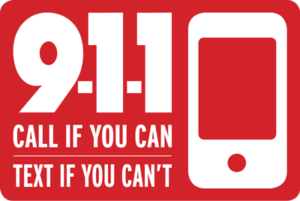9-1-1 Program
 Since 1968, the three-digit telephone number "9-1-1" has been designated as the "Universal Emergency Number" for citizens throughout the United States to request emergency assistance. The 9-1-1 system offers an easy-to-remember number for people to reach police, fire or emergency medical assistance from any phone in any location.
Since 1968, the three-digit telephone number "9-1-1" has been designated as the "Universal Emergency Number" for citizens throughout the United States to request emergency assistance. The 9-1-1 system offers an easy-to-remember number for people to reach police, fire or emergency medical assistance from any phone in any location.
In Texas, the program is a sophisticated and powerful network, overseen by the Commission on State Emergency Communications and implemented at the COG level. HOTCOG’s 9-1-1 program delivers this service to Bosque, Falls, Freestone, Hill, and Limestone counties. McLennan County has its own separate emergency communications district and is not included in the HOTCOG regional 9-1-1 program.
Contacts
(254) 292-1800
Kristine Hill – 9-1-1 Coordinator
Email: Kristine.Hill@hot.cog.tx.us
- Database for Bosque, Freestone and Limestone counties
- Strategic Planning & Budgeting
- Program Administration
- Compliance to the State
Sarah Wines – 9-1-1 / GIS Coordinator
Email: Sarah.Wines@hot.cog.tx.us
- County and City maps (Bosque, Falls, Freestone, Hill and Limestone counties)
- Database for Falls and Hill counties
- Public Education
- Wireless
911 Info
Text-to-9-1-1: What You Need to Know
 Text-to-9-1-1 service is available in and allows citizens of Bosque, Falls, Freestone, Hill, and Limestone Counties to send a text message directly to 9-1-1 for assistance in the event that they are unable to make a voice call.
Text-to-9-1-1 service is available in and allows citizens of Bosque, Falls, Freestone, Hill, and Limestone Counties to send a text message directly to 9-1-1 for assistance in the event that they are unable to make a voice call.
Steps to send a text to 9-1-1:
- In the recipient field, enter 911
- Compose the message
- Push to “Send” button
Be prepared to answer questions and follow instructions from the 9-1-1 call taker
Once your text is sent, the 9-1-1 system will send an automated message asking the individual for the address of the emergency. This starts the text session between 9-1-1 and the individual needing emergency help. If an individual attempts to text 9-1-1 in an area where the service is not available, a “bounce back” message will be sent that will tell the individual to make an emergency voice call.
However, voice calls are still the fastest and best way to contact 9-1-1 for emergencies. It is important to remember that the Text-to-9-1-1 service should only be used in an emergency situation when the person needing help is unable to speak. If you are able, please call 9-1-1. It takes longer to share all of the necessary information when communicating through text messages. Examples of such situations include, but are not limited to:
- a person having a hearing and/or speech disability
- a medical emergency rendering the person incapable of speech
- when speaking out loud would put the caller in danger (i.e. home invasion, abduction, domestic violence, active shooter scenario, etc.)
When using the Text-to-9-1-1 service, the individual must:
- know the exact location and nature of the emergency
- use simple language when texting with 9-1-1 (no abbreviations, acronyms, or slang)
- pull over to a safe location when sending a text to 9-1-1 – Do Not Text and Drive!
The Federal Communications Commission (FCC) is updating information as counties and Public Safety Answering Points (PSAPs) add Text-to-911 services. You can find more information on their website in the PSAP Text-to-911 Readiness and Certification Registry.
Strategic Planning
HOTCOG develops and submits the 9-1-1 Strategic Plan on a biennial basis. The Plan contains local implementation levels and priorities; plan costs by county, level, and component; equipment worksheets for justification of need; system telephone network diagrams by county and administrative budget information. The Strategic Plan clearly defines data such as dates of system upgrades/replacements, addressing maintenance activities, Public Safety Answering Point (PSAP) training activities, etc.
Rural Addressing
Automatic Location Identification (ALI) service is based on the ability to identify the caller’s physical location. HOTCOG funds addressing maintenance activities in each county. The county Addressing Coordinator’s duties include GIS point-gathering, database and mapping activities. COG staff then can upload the information into the location software, checking and rechecking for accuracy and changes.
9-1-1 Addressing Coordinators:
- Bosque County: 254-435-6234 – Ashley Browning
- Falls County : 254-883-3376 – Jeff Watkins
- Freestone County: 903-389-8884- Steve Black
- Hill County: 254-266-1445 – Karin McClendon
- Limestone County : 254-729-5513 – Robbie Pettigrew
Mapping/GIS
HOTCOG maintains and utilizes the geographic information system (GIS) for the region. The COG provides mapping activities including updating and maintaining street files, telephone exchange boundaries, emergency service provider boundaries, and cellular tower sites. HOTCOG has purchased and distributed GPS units to the coordinators. These units are being used to collect driveway points and road features that will be displayed on digital maps at the PSAPs.
Regional maps are made available to the public upon request in the following sizes:
- C – 12″ x 17″ (city maps are typically this size)
- D – 22″ x 34″
- E – 34″ x 44″
For more information or to request a map, contact Sarah Wines at 254-292-1878.
Public Education

HOTCOG provides public education activities throughout the region including the distribution of 9-1-1 materials.
KARI’S LAW: Direct access to 9-1-1 service and multi-line telephone systems
For a multi-line telephone system that provides outbound dialing, Kari’s Law required direct access to 9-1-1 service without the user having to first dial an initial number, digit, prefix, or other access number of code before dialing 9-1-1. On March 1, 2016, the Commission on State Emergency Communications (CSEC) adopted Rule 251.16 (Direct Access to 9-1-1 Service) to implement Kari’s Law.
To learn more about Kari’s Law, please refer to the following resources:
Database
HOTCOG staff works with county addressing coordinators, telephone companies, and post offices to obtain correct address information and eliminate errors. HOTCOG maintains a master street address guide and database for each county and regularly submits updates to the database provider.
Advisory Committee
An Advisory Committee composed of representatives from each county possessing a range of technical expertise, provides guidance and approval on issues related to the 9-1-1 program. Committee Members continue to be advocates for local control of the 9-1-1 program.


